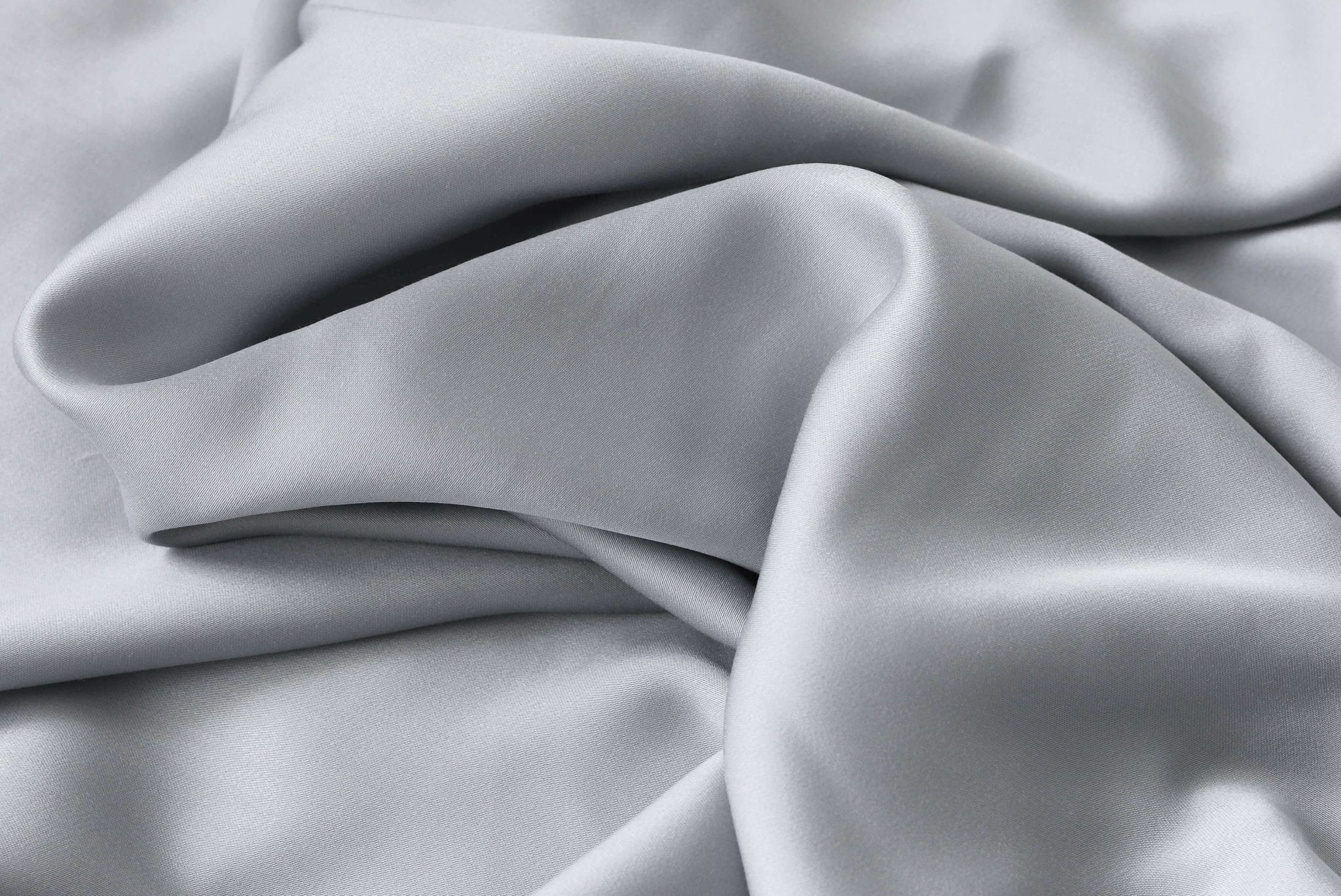What is Bamboo Lyocell?
There are more options than ever when it comes to choosing the fabrics you’ll spend 1/3 of your life resting on. So it is more important than ever to consciously choose the best option for you.
Bamboo Lyocell is an incredibly sustainable fabric that utilises the latest technology in manufacturing. The result it a truly organic fabric that is luxuriously soft and ideal for sleeping on. But how is Bamboo Lyocell different than other fabrics made of bamboo, like Viscose? In this blog, we are going to explain what Bamboo Lyocell is, how it is uniquely made, and why it is the premier choice for bedding.
The basics: We can break down the name to understand the basic elements of this fabric- Bamboo refers to the raw material that is used to create the fabric- bamboo. Lyocell is the name of the innovative processing method use to transform the raw material (bamboo) into the fibres for fabric.
What makes it innovative? Next, we are going to explain the full process of Lyocell, but essentially it is a closed-loop process, where 99% of inputs are captured and reused. This allows Lyocell to use only a fraction of the water as alternative fabrics & no harmful In-organic chemicals in the process. The result is a genuinely eco-friendly fabric that is soft of the planet, those involved in the production, and ultimately, you resting on it.
How is Bamboo Lyocell made?
The fibers are regenerated from the cellulose—or natural polymers—of bamboo. The bamboo wood cellulose is broken down with a non-toxic, organic compound known as NMMO and reformed into more easily woven fibers.
- Raw Bamboo is broken down into bamboo wood pulp
- The wood pulp is dissolved by combining the organic solvent known as NMMO or N-methylmorpholine N-oxide with the pulp
- The liquified wood pulp is filtered
- It is spun through spinnerets to create long bamboo fibres
- The long bamboo fibres are then washed and dried
- They are then carded which means to put them through a machine which separates and orders the strands
- Lastly the strands are cut and then are ready to be weaved into the final product
The sustainable closed-loop production of Lyocell recycles more than 99% of the water and the solvent used to spin the cellulose. This reduces the water required to process the fabric by more than 500x compared to cotton. The final product is fully bio-degradable with almost zero waste.
Alternatively, the production of bamboo viscose relies on toxic chemicals that are harmful to the environment, the people involved in the production and possibly the end user sleeping again the fabric. In the viscose method, the bamboo pulp is dissolved using an intense chemical process involving the use of the highly volatile, toxic chemical, carbon disulphide. Carbon disulphide is unstable and is harmful to the environment and people in general. Once the toxic chemicals are dissolved into wood pulp, the Viscose method uses sulphuric acid to spin the dissolved bamboo pulp into long bamboo fibres. This process is much more water intensive as none of the water can be recycled for the next process once the harsh chemicals are added to it.
Aside from the physical inputs of the production process, it is important to note that the processing of any fabric on a large scale is energy intensive. We hope that Lyocell will adopt the more efficient and renewable power sources that are readily available to reduce its energy footprint in addition to its already organic footprint.
Sadly, like many Green technologies, Bamboo Lyocell is more expensive than non-organic methods, such as Viscose. However, when Bamboo Lyocell is blended with synthetic fibres to cut costs, many of the benefits, like its breathability, are reduced, this is why our Groundd Weighted Blankets and Cooling Bamboo Sheet sets are made of 100% Bamboo Lyocell and are not mixed with synthetic materials.
Why use bamboo?
Bamboo is an incredible plant in its raw form. It is highly renewable, able to regrow to its full adult size in 3-5 years, growing up to 2 feet in 1 day. It is naturally pest resistant, meaning that no nasty pesticides are required to grow it and its planting helps rebuild eroded soil. On top of this the bamboo plant requires far less water, absorbs 5 times more carbon dioxide and produces 35% more oxygen than similar plants such as cotton.
What are the benefits of Bamboo Lyocell?
Bamboo Lyocell is often heralded as a “miracle fabric”? How does it get this name and does it live up to this acclaim?
As we have learned, Bamboo Lyocell is unparalleled in its sustainability, so this is clearly an important benefit to many.
it is luxuriously soft to sleep on and more breathable than similar alternatives even made of the same raw material, like Viscose. In addition to being Bamboo Lyocell is also moisture wicking and is great at absorbing moisture, these qualities combined with the breathability, softness & gentleness of the fabric make for the ultimate textile for sleep wear and bedding.
Plus it is durable and easy to care for, it soften with each wash and de-wrinkles naturally. So it is gentle on the planet, not harmful for the workers involved in the processing and the best choice for a breathable, organic fabric for sleeping on.



Leave a comment